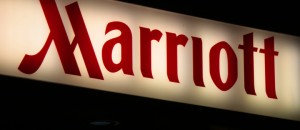Your blog has turned stale. You're running out of topics to write about. No one is “liking” your Instagram photos, or pinning your content on Pinterest.
So what can be done? The answer: unplug, and turn to connecting with offline marketing.
Here are a few ways to coordinate offline and online marketing endeavors.
1. Hashtag annual events Annual events provide the superb opportunity to connect people in a personal and social venue, online. Use a hashtag at an annual event that attendees can use when they post to their Instagram, Twitter and/or facebook from the party, an action that is sure to already happen! Coachella and hashtags go together like chicken and waffles. Not only is the festival itself hashtagged, but brands participating in the festival get in on the fun every year. This year's annual hippie-event brought McDonalds, Lacoste, Chevrolet, and many more brands together under multiple pop up shops. But the official clothing sponsor of Coachella, H&M, stole the show. The popular brand used the venue to show off upcoming releases, promote their partnership with Kiss for a Cause, and announce their highly anticipated collaboration with fashion icon Alexander Wang, all through Instagram and appropriately hashtagged #HMLovesMusic. Be creative yet simple when hashtagging events, and make sure you use that baby everywhere for maximum brand exposure!
2. Connect online and traditional marketing There's no reason to look at online and traditional marketing efforts as two different beasts. Instead, use the two to support each other through one cohesive message. HGTV's “Love Home” campaign did just that. The brand ran TV ads asking viewers to upload images of themselves to Twitter and Instagram with the tags #lovehome or #HGTV. Over 40,000 submissions were received by HGTV and some lucky fans even had their photos included on TV ads and on the company blog. By connecting the online and the offline world through user generated content, a brand can make their followers feel as though they are an essential part to the system, as opposed to just the end user.
3. Advertise social channels on location Brands that exist as brick and mortar stores can use its physical space to promote their presence online. For example, a restaurant might want to include their Instagram account in menus or on napkins to encourage eaters to share pictures of their food. (Since, let's face it, those food selfies are already going to happen.) A clothing store could use the often-unused real estate on bags to include social media handles. If customers leave the location with some reminder of the brand's online presence, they will be much more likely to visit the page.
Read more: Need Fuel for Your Online Marketing? Say Hello to Offline Marketing






